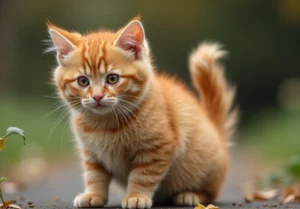Cats are fascinating creatures with many unique features, including an extra claw that sets them apart from other animals. Have you ever wondered why cats have an extra claw? Let’s explore the reasons behind this intriguing aspect of feline anatomy.
Evolutionary Advantage
Cats have an extra claw, known as the dewclaw, which serves as a remnant of their evolutionary past. This additional claw played a crucial role in the wild when cats needed to climb trees or catch prey. The dewclaw provided extra gripping power, allowing cats to navigate tricky terrain or ambush their prey effectively.
The evolutionary advantage of the dewclaw lies in its ability to provide cats with added stability and balance. This extra digit helped our feline friends survive and thrive in their natural environment by granting them a competitive edge in hunting or escaping predators. While domestic cats may not rely on their dewclaws as much as their wild ancestors, this extra claw remains a valuable asset that showcases the fascinating evolutionary journey of these agile creatures.
For further insights into the evolutionary advantages of cats having an extra claw, check out this informative resource from National Geographic: Why Do Cats Have Retractable Claws?.
Types of Claws
Cats possess a variety of claws, each serving a unique purpose in their daily activities. Among these claws is the dewclaw, an additional digit that sets cats apart from other animals. While the primary function of the dewclaw may not be as prominent in domestic cats, it still plays a role in grooming, climbing, and self-defense.
In addition to the dewclaw, cats have retractable claws that help them maintain sharpness for hunting and self-protection. These claws can extend and retract based on the cat’s needs, providing them with a versatile tool for various tasks. Cats also have specialized claws for gripping, climbing, and scratching, highlighting the complexity of their paw structure and the importance of each claw in their daily lives.
Understanding the different types of claws that cats possess sheds light on their remarkable adaptability and innate abilities. By appreciating the unique roles that each claw plays, we gain a deeper understanding of our feline companions and their fascinating behaviors.
Grooming Behavior
Cats have an extra claw known as the dewclaw that may seem like a small appendage, but it serves a crucial function in their grooming behavior. While cats are meticulous groomers, the dewclaw provides extra support and precision when they clean hard-to-reach areas, such as behind their ears or around their face. This extra claw acts almost like a thumb, allowing cats to grasp and manipulate their fur effectively during grooming sessions. So, the next time you see your feline friend meticulously grooming themselves, remember that their extra claw is playing a vital role in keeping them clean and presentable.
Hunting and Defense
The extra claw in cats, the dewclaw, also comes in handy when it comes to hunting and defense. Cats are natural predators, and the dewclaw provides them with additional traction and grip when they need to pounce on prey or climb trees to escape danger. This extra claw gives them an extra edge in catching their next meal or warding off potential threats. So, while it may seem like a small detail, the presence of the dewclaw can significantly impact a cat’s ability to survive in the wild.
Additional Unique Insight:
Did you know that some cats are born without dewclaws? While most cats have this extra claw, some breeds, like the Manx, can be naturally dewclaw-less. This genetic variation doesn’t hinder their grooming or hunting abilities, showing that cats are adaptable creatures with or without the extra claw.
Remember, the next time you observe your feline friend exhibiting their grooming or hunting behaviors, appreciate the role their extra claw plays in these essential activities.
Medical Implications
Cats are equipped with five retractable claws on their front paws, but did you know that they actually have an extra claw called the dewclaw? This claw is located higher up on the inside of their paw and doesn’t come in contact with the ground when they walk. While the dewclaw may seem like an evolutionary leftover, it actually serves a purpose in helping cats with their grooming routine.
Fun Facts
- Cats use their dewclaws to help comb through their fur and keep themselves clean.
- Some cats have dewclaws on their back paws as well, adding an extra layer of agility and balance to their movements.
- The dewclaw is similar to a thumb in humans, giving cats an extra “digit” to hold onto things.
By understanding the function of the dewclaw in cats, we can appreciate the unique adaptations that make these animals such fascinating companions.
Alex, a passionate animal lover, has experience in training and understanding animal behavior. As a proud pet parent to two dogs and three cats, he founded AnimalReport.net to share insights from animal experts and expand his knowledge of the animal kingdom.




